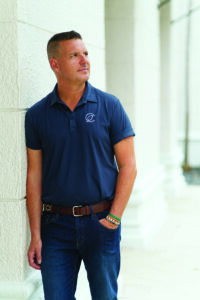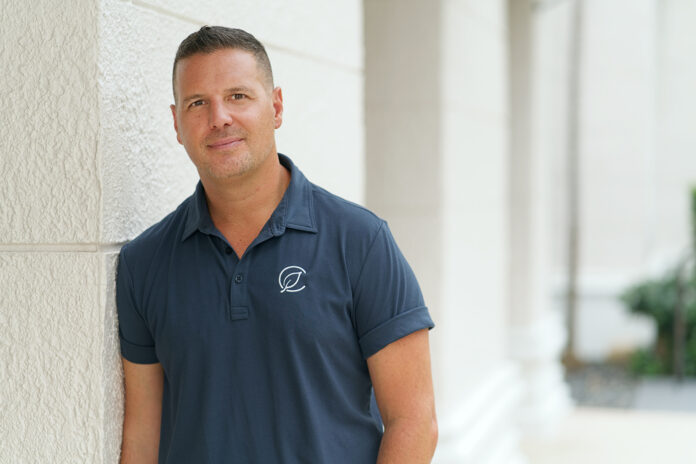In April, cannabis giant Curaleaf received a disconcerting notification from the New Jersey Cannabis Regulatory Commission (CRC) indicating regulators planned to deny license renewals for almost all the sprawling multistate operator’s locations in the Garden State. The notice cited a recent cultivation facility closure, staff reductions, and clashes with labor unionization efforts as justification.
The development quickly drew the ire of Chief Executive Officer Matt Darin. An otherwise amiable and upbeat fellow, he wasted no time in responding to the unprecedented CRC decision, calling the move “an outrageous act of political retaliation for our need to consolidate production into one local facility.”
“The CRC board’s action today is as arbitrary as it is lacking in merit and legal basis,” Darin wrote to the agency.
A few days later, the CRC relented and reversed the decision—with a few strings attached. Curaleaf would provide evidence of good-faith efforts to reach collective bargaining agreements at each New Jersey facility, attest under oath to its “activities and tactics,” prove its hiring practices and vendor-selection methods meet “certain criteria,” and explain in detail its plans for any operational modifications being considered in New Jersey. Ultimately, what could have been a costly setback for the company represented little more than a temporary inconvenience.
With operations in twenty-one U.S. states and eight European countries, vertically integrated Curaleaf is one of the largest global cannabis companies. Its revenues topped $1.2 billion in 2021 and $1.34 billion in 2022. Darin is a relative newcomer to the organization, arriving in 2020 shortly after the company spent hundreds of millions of dollars acquiring other operators and assets across the United States.

A graduate of the University of Illinois with a Bachelor of Science in accounting and another degree in business administration-management information systems, Darin later added a certified public accountant license to his resume. After settling in suburban Chicago, he held jobs in public accounting and commercial real estate, but when Illinois opened up medical cannabis in 2014, he jumped at the chance to be a pioneer in a new, multibillion-dollar industry. He recruited a few business partners, applied for a medical license, and Grassroots Cannabis was born a few months later. Over the next few years, he built the company into one of the largest multistate operators in the U.S., with 1,200 employees and more than seventy licenses to grow, process, and sell in a dozen states.
From 2015 to 2018, as Grassroots expanded throughout the Midwest, Curaleaf was blazing a trail of its own, expanding operations up and down the East Coast and acquiring several licenses in the lucrative Florida market. In early 2020, Curaleaf acquired Select, then one of the largest West Coast operators, in an all-stock deal valued at $948 million. At the time, Curaleaf owned more than fifty dispensaries and declared itself the largest cannabis company in the world by revenue.
Curaleaf acquired Grassroots in July 2020 in a deal valued at about $700 million. The acquisition more than doubled Curaleaf’s footprint to 135 dispensaries and licenses in twenty-three states.
For the first few years, Darin maintained his role at Grassroots, expanding the brand east and west. In 2022, citing his track record of success, Curaleaf named him CEO.
Born and raised in the Midwest, Darin has a suburban-style, folksy demeanor. He’s just as comfortable talking about his favorite pizza or Chicago sports as he is the international cannabis market and capital-expenditure cycles. And when a “holy cow” slips out during conversation, his Windy City roots show. Growing up and during college, he was drawn to the colorful characters who smoked weed and listened to cool music, and the plant served as a constant source of inspiration for him both culturally and intellectually.
Recently, he and his family moved from the Chicago suburbs to Miami, where he can keep closer tabs on Curaleaf’s East Coast operations and scout new opportunities. He is also closer to Washington D.C., where he has been advocating for reform and taking more of a leadership role in the industry.
What made a levelheaded Midwesterner like you want to dive into this volatile industry?
I found at a young age that the smartest, most interesting people who listen to the best music seem to use cannabis more than alcohol or other drugs, so I just gravitated toward that. I had always been a believer in [the plant] and had family members who had been helped with cancer and the other benefits cannabis offers.
When I read Illinois passed a medical-cannabis law, I said, “Holy cow, I cannot believe the Prairie State is legalizing cannabis.” I actually had some buddies I grew up with who lived in the [San Francisco] Bay Area and had been involved in the industry, so I knew just enough to be dangerous.
The next day, I told my real estate partners we had to apply for these licenses. The more senior partner said, “No way. We’ve got reputational risk; we’ve got investors and lenders.” The younger one was more of a cynic and said, “You know, we don’t have the political connections in Chicago and Springfield to get these scarce licenses.” So I said, “Let me do the work. Let me do the due diligence.” I ended up jumping into it and spent a bunch of time in Colorado and California just learning, networking. We applied for licenses and got three of the original licenses in Chicago, and that set us off.
Why do you think Curaleaf offered you the CEO position?
I think having a background in finance, accounting, and real estate [helped], and then actually having real cannabis operations experience. At the time, there weren’t that many people who had set up large-scale cultivation and processing facilities and dispensaries and dealt with all the highly regulated markets and things like that. So the combination of skills and having a lot of industry knowledge and experience was a big part of it.
You’ve been a business leader in previous roles, but what have you had to work on to broaden your skill set since becoming a CEO?
I’m focused on being an ambassador for the company, educating people about the company, and working a lot in the capital markets with investors and analysts. I’m also really getting involved in Washington D.C., doing advocacy for our industry, and serving more as a leader in the industry. So those are all things I’m spending more time on today than I ever did previously.
What have you learned from your meetings in D.C.?
I’ve had a lot of meetings with both Republicans and Democrats in the Senate and the House. I think the good news is you have a lot of people in Congress who are interested in meeting with the cannabis industry. They want to hear about where the challenges are. Safe banking is a big part of the conversation, along with getting some very sensible banking reform for our industry.
There are also conversations regarding rescheduling, and there is a lot of interest in what’s going on in the illicit market and how we protect the regulated market. It was encouraging that there’s definitely a keen interest in wanting to hear more and learn about what’s really going on. So that was a positive. But if we want to be successful in Washington D.C., we need to continue to pool our resources and relationships and really work together.
Several companies, including Curaleaf, have put their operations on pause in California. What will it take for you to reinvest in that market?
We elected to take a step back from some of these markets right now given that we just see better opportunities in other markets, and we’re looking to preserve capital and focus on generating positive cash flow. We need to ensure we are investing our dollars in the markets that are the most profitable and the most stable, so that was a big part of the decision-making.
What we would anticipate hopefully seeing at some point is stabilization of these large West Coast markets—where the supply and demand get back into balance and some of the regulatory structures are revisited in terms of tax structures and overall licensing—and also some protection of the regulated market and enforcement of the illicit market. That’s been the biggest challenge in California, having a thriving illicit market. I think there’s news out there that [stabilization] is in the early stages of happening. So we’ll keep tabs on it, and when good opportunities present themselves, we will revisit it.
Are you concerned about New York’s similarly strong and established underground market?
Yes, it’s a major concern of ours. You know, we were founders of the medical program in New York, and we’ve got almost 50 percent market share in that market. So we’ve been operating there for years, and we’re based in New York. But the way [the recreational market] is being rolled out currently is not setting it up for success. It’s been widely reported there are 1,400 or so illicit storefronts in New York City that are selling untested, unregulated products. It’s just the lack of enforcement there.
So, yes, it is a concern, but there’s still an opportunity to rectify it. And there’s a role to play for the registered organizations that have been operating in the medical industry. There’s also a role to play for the social-equity applicants and some of the new entrants and entrepreneurs in the market, but it’s a large enough market for everyone to coexist, and we’re hopeful that’s going to take place.
How do you view the retail experience and the consumer experience? What will change those experiences over the next couple years?
Technology is changing everything everywhere, but I think the technology in the world of cannabis retail is really changing a lot of different things. Take the ability for consumers to order on their phone through a mobile app like they would at Starbucks or Sweetgreen. At dispensaries, you’re able to choose from hundreds of different products, and you’re able to get products recommended to you based on your purchasing habits. You’re able to either go pick them up or have them delivered to your home. That whole experience is evolving a lot from what it was even a few years ago.
The frictionless experience consumers now expect in most facets of their lives is taking place in cannabis. Also, the majority of the orders we receive are done on people’s mobile devices and through pre-orders. That’s really changing how we design our stores, locate our stores, and operate them. I think that’s a trend we’ll see continue.
What types of new products get you excited, and what do you like to use personally?
One area that definitely gets me excited is the innovation taking place in a lot of different product categories. It wasn’t that long ago you were buying cannabis and you didn’t even know what strain it was. Now you can go to one of our dispensaries and choose from literally hundreds of products across every product category with a customized experience based on what your appetite is, how long you’re looking for the effect [to last], and whether it’s daytime, nighttime, or the weekend.

In terms of things that get me excited, I’ve always been an edibles consumer, especially gummies, and I consider myself a gummy connoisseur. There is a lot of innovation going on with things like quick onset, where we can ensure the edible is going to kick in within fifteen minutes, and also shorter durations that last for a few hours. A lot of the science is going into being able to deliver that experience consistently.
I’ve also seen a lot of interesting things in the world of solventless extraction and hash and rosins—the really flavorful full spectrum, the essence of the plant, and all the benefits of that. Beverages are a tiny fraction of the market, but you’re going to continue to see cannabis-infused beverages in their various forms, and there’s a big trend happening with people of many ages now using cannabis in lieu of alcohol. There are studies coming out showing many demographics now favor cannabis over alcohol.
To the extent we can continue providing a different type of experience and a healthier experience, I see that as one of the biggest opportunities across all markets.
Curaleaf operates at every level of the supply chain. Which operations are the most challenging?
One of the biggest challenges I see—and I think all the vertically integrated multistate operators probably are experiencing much of the same—is operating at scale and driving toward consistency, best practices, standardization, common products and manufacturing methods, packaging, and the whole consumer experience. It’s really one of the benefits of operating at the scale we’re at while still dealing with the patchwork of state-level regulations that don’t allow you to be fully standardized.
The cannabis consumer has different needs depending on markets, regions, maturity levels of the industry there, and medical and adult use. The term we use is “harmonization, not standardization,” and I think that’s a good way to describe how we are harmonizing our operations in a world where complete standardization is still not quite possible due to the state-by-state nature [of the industry].
How is Curaleaf approaching the capital markets and public exchanges?
We’re always looking at opportunities to create value and ensure we’re positioned to access capital, but we’ve got more than enough cash on our balance sheets to fund what’s needed. We’re cash-flow-positive this year, so we’re generating cash. We’re also more mature in our [capital expenditure] cycle, because we’ve already done the investing in large cultivation facilities in our major markets. So we’ve got a lot of that behind us.
With that said, we’re always looking to find the lowest cost of capital and be best positioned, and we do see some opportunities. The Toronto Stock Exchange is something we have talked about, so we’re in advanced discussions there and see that as a possibility. And when the opportunity arises to list on a U.S. exchange, we’re going to be ready for that. That will ultimately depend on some of this legislation in Washington D.C. It will certainly be a huge event for the industry when [federal legalization] happens.
When you look at the other multistate operators and their strategies, what do you think makes Curaleaf unique?
One of the things that makes us unique is the scale and the presence and the market share we have, and the number of battleground markets throughout the country. We’ve got leading market share in places like Florida, Arizona, New Jersey, New York, Pennsylvania—a number of different markets. The diversity of having the scale of presence in some of the largest markets in the country, I think that’s unique. I don’t think anybody else has that footprint and that presence in battleground markets.
We really continue to focus on being able to feature our own products and brands and add to that portfolio and our ability to feature that in 150 retail locations throughout the country. It’s unique to have that ability to feature our [house brands] at that type of scale.
Curaleaf has put more focus on Europe in the past couple years. Which markets are the most promising?
The two markets we are most focused on and excited about are the United Kingdom and Germany—the large markets. The U.K. has some 60 million people, and we are the largest player there today in the medical market. That market feels like the U.S. medical markets in maybe five years. We just see a tremendous amount of opportunity in the U.K. as that market continues to grow.
The other big one is Germany, which is slated to launch adult use, and it’s had a medical program so far. We acquired a company called Four 20 Pharma that has a strong presence in the medical market, and we are really excited about what’s on the horizon for both the expansion of the medical market as well as adult use. Some headlines came out recently regarding what’s going to take place with adult use and expansion of the medical program—removing cannabis from the narcotics list in Germany—which is going to make cannabis much more accessible for people.
Anything else on your mind these days?

Two things come to mind. The first is how interesting it is that cannabis legalization is a global phenomenon. In the U.S., oftentimes people are just focused on what’s going on here and maybe Canada and don’t pay attention to Europe or Asia or South America. There’s an awakening and education taking place about the benefits of cannabis for medical purposes and the justice associated with legalizing it and decriminalizing it for adult use. I think that’s going to be a continuing trend we’ll see throughout the world.
The second one is the inflection point we’re at in the U.S. industry. Twenty-seven years after California legalized with Prop[osition] 215, we’ve gone from California being the only legal state to a $35-billion nationwide legal market. My home state of Illinois is producing more tax revenue from cannabis than it is from alcohol today, and that’s an amazing statistic. When I’m talking to politicians in D.C., they’re blown away by that.
There’s been amazing progress despite not having any action at the federal level, but we’re also at real risk of having this whole regulated industry be in real distress. We’re already there in many ways and in many markets. I do think it’s a really pivotal time for the industry to come together.










[…] – After two years at the helm of one of the world’s largest publicly traded cannabis companies, Matt Darin will step down as chief executive officer at Curaleaf Holdings Inc. August 16. In his place, the […]
[…] expanding our ability to serve the growing community of patients in this vibrant area,” said Matt Darin, CEO of Curaleaf. “Our newest dispensary in the Sunshine State is our seventh store in […]
[…] an operational presence in 14 states, Curaleaf is one of the most widely recognized cannabis brands in the nation. And while the phrase “high […]
[…] bring their operations across state lines. Today’s industry leaders like Green Thumb Industries, Curaleaf, Cresco, and Trulieve were operating in medical-only states like Illinois, Massachusetts, and […]